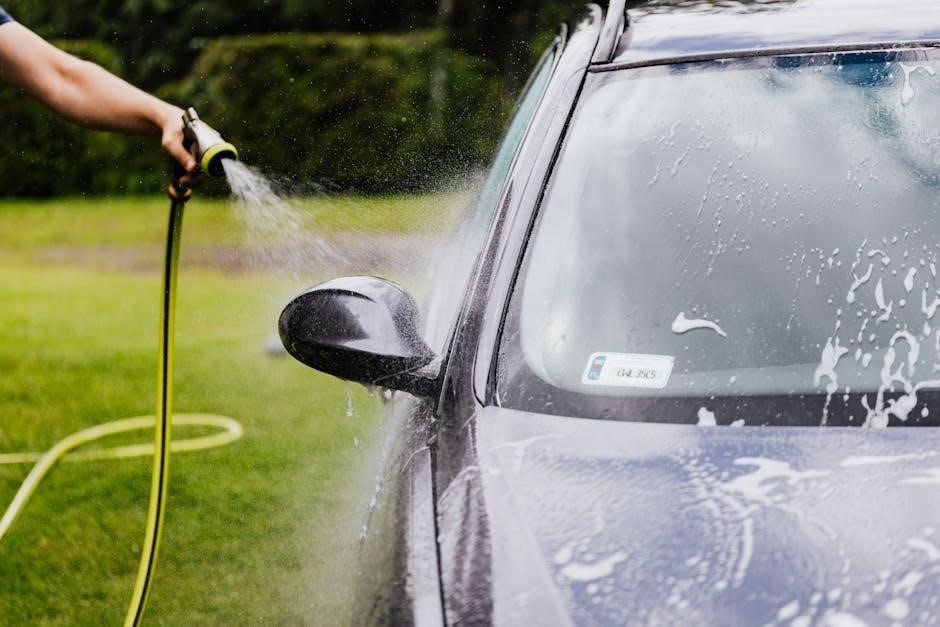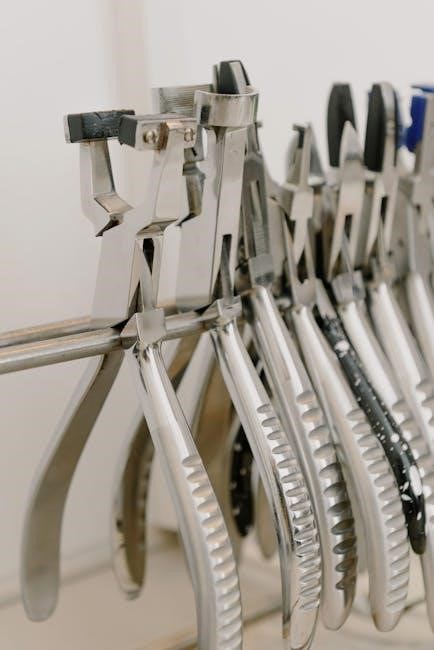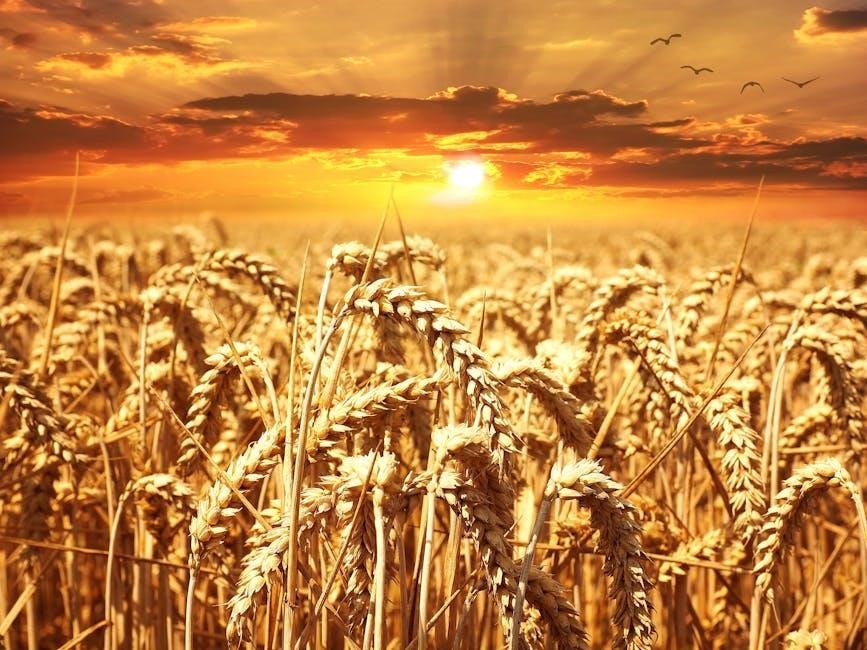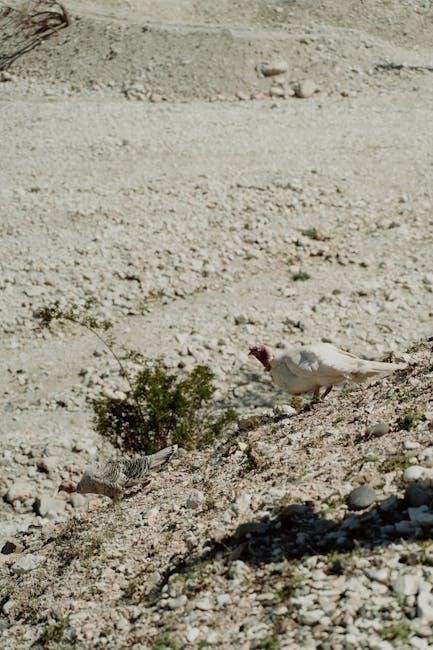The Mercury Marine Service Manual PDF is a comprehensive guide for maintaining and repairing Mercury outboard engines, covering 2-stroke, 4-stroke, EFI, Verado, and SeaPro models. It includes detailed specifications, step-by-step procedures, wiring diagrams, and exploded views, essential for professionals and DIY enthusiasts alike. This manual ensures proper troubleshooting, maintenance, and repair, helping users optimize engine performance and extend lifespan. Available for immediate download, it is a vital resource for anyone working with Mercury outboard motors.

Overview of the Manual
The Mercury Marine Service Manual PDF is a detailed guide designed for professionals and DIY enthusiasts, covering maintenance, repair, and troubleshooting of Mercury outboard engines. It includes comprehensive sections on specifications, step-by-step procedures, wiring diagrams, exploded views, and parts lists. The manual supports various engine types, such as 2-stroke, 4-stroke, EFI, Verado, and SeaPro models, ensuring broad applicability. With clear instructions and technical diagrams, it helps users identify and resolve issues efficiently. Available for immediate download, the manual is a must-have resource for anyone aiming to maintain, repair, or optimize their Mercury outboard motor’s performance and longevity.
Importance of Using the Service Manual

Using the Mercury Marine Service Manual PDF is crucial for ensuring proper maintenance, repairs, and safety for Mercury outboard engines. It provides detailed, engine-specific instructions that help prevent damage and ensure reliability. The manual includes safety precautions, troubleshooting guides, and step-by-step procedures, making it essential for both professionals and DIY enthusiasts. Adhering to the manual’s guidelines helps maintain warranty compliance, extends engine lifespan, and optimizes performance. It also empowers users to handle routine maintenance cost-effectively. By following the manual, users can avoid legal issues related to improper repairs and ensure their engine operates at its best.

What the Mercury Marine Service Manual Includes
The manual provides detailed guides for Mercury outboard engines, including maintenance schedules, troubleshooting, and repair procedures. It covers engine specifications, wiring diagrams, and parts lists.
Specifications and Technical Details
The Mercury Marine Service Manual PDF provides precise specifications and technical details for outboard engines, including torque values, fluid capacities, and service limits. It outlines engine models, horsepower ratings, and recommended lubricants. Detailed charts and tables specify part numbers, bolt sizes, and electrical connectors. This section ensures accurate maintenance by providing factory-recommended settings for optimal performance. Engine diagrams and dimensional drawings are included for clarity. Whether diagnosing issues or performing routine service, the manual offers essential data to maintain engine reliability and longevity. It serves as a cornerstone for technicians and DIY enthusiasts alike, ensuring adherence to manufacturer standards.

Step-by-Step Service Procedures
The Mercury Marine Service Manual PDF offers detailed, step-by-step service procedures for routine maintenance and complex repairs. Each procedure is clearly outlined, ensuring tasks are performed efficiently and safely. From oil changes to engine overhauls, the manual guides users through every process with precision. Visual aids, such as photos and diagrams, complement the instructions, making it easier to understand complex operations. The manual covers diagnostic troubleshooting, part replacement, and system adjustments, providing a comprehensive resource for technicians and DIY enthusiasts. By following these procedures, users can maintain engine performance, prevent premature wear, and ensure reliability on the water.
Wiring Diagrams and Electrical Systems
The Mercury Marine Service Manual PDF includes detailed wiring diagrams and electrical system schematics, essential for diagnosing and repairing electrical issues. These diagrams are color-coded and labeled for clarity, helping users identify components, connections, and circuits. The manual covers everything from basic battery connections to complex electronic control systems. Troubleshooting sections provide guidance on identifying faults in sensors, ignition systems, and other electrical components. With these resources, technicians and DIY enthusiasts can confidently address electrical problems, ensuring the outboard engine operates at peak performance. The diagrams are a vital tool for maintaining and repairing Mercury Marine engines effectively and safely.
Exploded Views and Parts Lists
The Mercury Marine Service Manual PDF provides detailed exploded views of engine components, allowing users to visualize how parts fit together. These diagrams are invaluable for disassembly, reassembly, and identifying specific components. Accompanying parts lists include part numbers, descriptions, and quantities, ensuring accurate ordering of replacement parts. This section is crucial for maintenance, repairs, and upgrades, as it helps users locate and understand each component’s role. The exploded views and parts lists work together to simplify complex tasks, making it easier to service Mercury Marine engines effectively. They are essential for both professional technicians and DIY enthusiasts seeking precise guidance.

Why the Mercury Marine Service Manual is Essential
The Mercury Marine Service Manual is a comprehensive resource essential for proper maintenance, repairs, and optimizing engine performance. It ensures safety, efficiency, and longevity of your marine engine.
Safety Precautions and Guidelines
The Mercury Marine Service Manual emphasizes critical safety measures to protect both the technician and the equipment. Proper procedures ensure safe handling of fuel, electrical systems, and hazardous materials. Always wear protective gear like gloves and goggles. The manual highlights potential risks associated with improper practices, such as fire hazards or electrical shocks. Adherence to guidelines prevents accidents and ensures compliance with marine regulations. Additionally, it provides instructions for proper tool usage and workspace preparation. Following these precautions guarantees a safer working environment and helps maintain the integrity of the engine. Safety is paramount, and the manual serves as a reliable guide to minimize risks effectively.
Cost-Effective Maintenance and Repairs
The Mercury Marine Service Manual PDF provides detailed guidance for cost-effective maintenance and repairs, helping users avoid expensive professional services. By following the manual’s instructions, DIY enthusiasts and technicians can perform routine inspections, replace worn parts, and address issues early to prevent costly damage. The manual lists required tools and materials, ensuring repairs are done efficiently. Regular maintenance schedules and troubleshooting sections help extend engine lifespan. Additionally, clear diagrams and step-by-step procedures reduce guesswork, saving time and money. This resource empowers users to handle repairs confidently, making it an invaluable tool for budget-conscious boat owners. Proper maintenance ensures optimal performance while minimizing long-term expenses.
DIY-Friendly Instructions
The Mercury Marine Service Manual PDF is designed to empower DIY enthusiasts with clear, step-by-step instructions for maintenance, troubleshooting, and repairs. Detailed diagrams and photos accompany each procedure, ensuring even novice users can follow along confidently. The manual breaks down complex tasks into manageable steps, reducing confusion and saving time. Tool lists and material specifications are provided upfront, helping users prepare beforehand. Written in straightforward language, the guide avoids technical jargon, making it accessible to all skill levels. This DIY-friendly approach enables boat owners to tackle repairs independently, fostering a sense of self-sufficiency and reducing reliance on professional services. It’s a comprehensive resource for anyone looking to maintain or repair their Mercury outboard engine effectively.

Types of Mercury Outboard Engines Covered
The Mercury Marine Service Manual PDF covers 2-stroke, 4-stroke, EFI, and Verado/SeaPro engines, providing detailed info for each type, ensuring optimal performance and longevity.
2-Stroke Outboard Engines
The Mercury Marine Service Manual PDF provides comprehensive coverage for 2-stroke outboard engines, including maintenance schedules, troubleshooting guides, and repair procedures. These engines, known for their lightweight and compact design, are popular for smaller boats and high-performance applications. The manual details fuel system operation, cooling mechanisms, and lubrication requirements specific to 2-stroke models. It also offers step-by-step instructions for diagnosing common issues like poor starting, rough running, or excessive smoke. Additionally, the manual includes torque specifications, part replacement guidelines, and tips for optimizing performance and fuel efficiency; Whether you’re a professional mechanic or a DIY enthusiast, this section ensures you can service and maintain your 2-stroke Mercury outboard with confidence and precision.
4-Stroke Outboard Engines
The Mercury Marine Service Manual PDF thoroughly covers 4-stroke outboard engines, providing detailed maintenance, repair, and troubleshooting procedures. These engines are renowned for their durability, fuel efficiency, and reduced emissions compared to 2-stroke models. The manual includes oil change intervals, cooling system checks, and spark plug replacement guidelines. It also addresses common issues like overheating, low power output, and electrical faults. With clear diagrams and step-by-step instructions, the manual ensures proper servicing of components such as the cylinder head, crankshaft, and exhaust system. Whether you’re a professional technician or a boat owner, this section equips you with the knowledge to maintain and repair your 4-stroke Mercury outboard engine effectively, ensuring optimal performance and longevity.
EFI (Electronic Fuel Injection) Engines
The Mercury Marine Service Manual PDF dedicates a section to EFI (Electronic Fuel Injection) engines, highlighting their advanced technology for precise fuel delivery; These engines offer superior fuel efficiency, improved performance, and reduced emissions. The manual provides detailed troubleshooting for EFI-specific issues, such as fuel system glitches, sensor malfunctions, and error codes. It guides users through diagnosing and repairing complex electronic components, ensuring proper functionality. Maintenance procedures, like fuel pressure testing and injector cleaning, are also covered. By following the manual’s instructions, users can optimize their EFI engine’s performance and longevity, avoiding costly repairs. This section is indispensable for technicians and boat owners alike.
Verado and SeaPro Engines
Verado and SeaPro engines are prominently featured in the Mercury Marine Service Manual, each offering unique benefits. Verado engines are known for their quiet operation, low emissions, and high torque, suitable for various boating applications. The manual includes detailed maintenance schedules, troubleshooting, and repair procedures with step-by-step instructions specific to Verado’s advanced technology, such as the belt-driven Power Steering system. SeaPro engines are built for commercial use, emphasizing durability and reliability. The manual covers their heavy-duty components, ensuring optimal performance and longevity. Following the manual’s guidelines helps users maintain their engines effectively, preventing issues and enhancing satisfaction.

Downloading the Mercury Marine Service Manual PDF
The Mercury Marine Service Manual PDF can be downloaded from official Mercury Marine websites and trusted marine service sites, ensuring legal compliance and access to accurate information.
Official Sources for the Manual
The Mercury Marine Service Manual PDF is available for download through official Mercury Marine websites and authorized dealers. These sources provide the most accurate and up-to-date information, ensuring compliance with manufacturer standards. Additionally, Mercury Marine partners with reputable marine service platforms to distribute the manual securely. Always verify the authenticity of the source to avoid unauthorized or outdated versions. Official sources guarantee reliable content, reducing the risk of errors during maintenance or repairs. They also provide access to supplementary materials, such as updates and technical bulletins, to keep your engine in optimal condition. Using official sources is the best way to ensure safety and compliance.
Trusted Websites for Download
Several trusted websites offer the Mercury Marine Service Manual PDF for download, ensuring safe and reliable access. Platforms like MarineEngineManuals.com and BoatManuals.club are known for their authentic resources. Additionally, forums and communities dedicated to marine enthusiasts often share verified links. Always verify the website’s security by checking for HTTPS and reading user reviews. Reputable sites provide clear download instructions and ensure the manual is in a usable PDF format. Be cautious of unofficial sources to avoid corrupted files or outdated information. Using trusted websites guarantees a smooth and secure downloading experience, ensuring you have the correct guide for your engine. Stay informed and download responsibly.
Legal and Safety Considerations
When downloading and using the Mercury Marine Service Manual PDF, it’s crucial to adhere to legal and safety guidelines. Ensure the manual is obtained from official or authorized sources to avoid copyright infringement. Always follow safety protocols outlined in the manual, such as wearing protective gear and ensuring proper ventilation. Improper repairs can lead to engine damage or safety hazards. Additionally, dispose of any materials responsibly, following environmental regulations. Never attempt procedures beyond your skill level without professional guidance. Compliance with legal standards and safety practices ensures both personal and environmental protection while maintaining your Mercury Marine engine’s performance and longevity effectively.

Using the Service Manual Effectively
Mastering the Mercury Marine Service Manual requires strategic planning and organized content review. Clear instructions and detailed diagrams ensure efficient and accurate results for beginners and professionals alike.
Navigating the Manual
Navigating the Mercury Marine Service Manual PDF is straightforward due to its organized structure. The manual features a detailed table of contents and index, allowing quick access to specific sections. Each chapter is clearly labeled, with sub-sections covering diagnostics, repairs, and maintenance procedures. Users can easily locate information by searching keywords or referencing page numbers. The manual also includes visual aids like diagrams and charts, which are cross-referenced for easy understanding. By familiarizing yourself with the layout, you can efficiently find the information you need, saving time and reducing frustration. This user-friendly design ensures that both beginners and experienced technicians can navigate the manual with ease.

Applying Service Procedures
Applying service procedures from the Mercury Marine Service Manual PDF requires attention to detail and adherence to guidelines. Always start by reviewing the specific procedure for your engine model, ensuring you have the necessary tools and materials. Follow the step-by-step instructions carefully, referencing diagrams or illustrations when provided. For complex tasks, such as engine overhauls or fuel system maintenance, break the process into manageable stages. Double-check torque specifications and fluid requirements to avoid damage or performance issues. If uncertain, consult additional resources or seek professional assistance. Proper application of these procedures ensures reliability, safety, and optimal performance of your Mercury outboard engine.
Understanding Diagrams and Schematics
The Mercury Marine Service Manual PDF includes detailed diagrams and schematics that are essential for diagnosing and repairing outboard engines. These visual aids provide a clear understanding of complex systems, such as electrical circuits, fuel injection components, and engine assemblies. Wiring diagrams help identify connections and troubleshoot electrical issues, while exploded views of parts allow technicians to see how components fit together. By studying these visuals, users can better comprehend the relationships between engine parts and follow service procedures more accurately. Color-coding and symbols are often used to simplify comprehension, making it easier to identify key components and their functions.
The Mercury Marine Service Manual is an invaluable resource, offering detailed procedures, diagrams, and safety tips. It empowers professionals and DIYers alike. Refer to it regularly for optimal results;
Final Thoughts on the Manual’s Value
The Mercury Marine Service Manual PDF is an invaluable resource for anyone maintaining or repairing Mercury outboard engines. It provides comprehensive guidance, ensuring safety, efficiency, and cost-effectiveness. By following the manual, users can avoid costly repairs and extend the lifespan of their engines. The detailed instructions and diagrams empower DIY enthusiasts and professionals alike, fostering confidence in handling complex tasks. Regular use of the manual ensures compliance with manufacturer standards, reducing risks of improper servicing. For boat owners and technicians, this manual is a must-have tool, offering unparalleled insights and support. Keep it handy to maximize your engine’s performance and reliability.
Encouragement to Use the Manual Regularly
Regular use of the Mercury Marine Service Manual PDF is crucial for maintaining optimal performance and longevity of your outboard engine. By referencing the manual frequently, you can identify potential issues early, ensuring timely repairs and preventing costly damage. The manual empowers you to take control of routine maintenance, saving time and money while building confidence in your DIY capabilities. Its clear instructions and detailed diagrams make it an indispensable resource for both novice and experienced users. Make the manual a regular part of your maintenance routine to keep your engine running smoothly and extend its lifespan. Consistent use will prove invaluable for years to come.




















